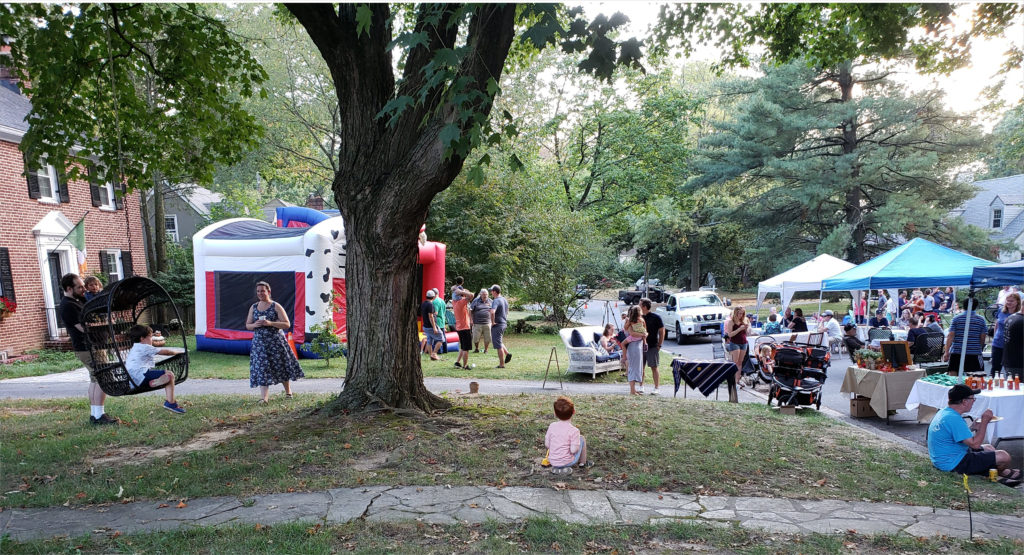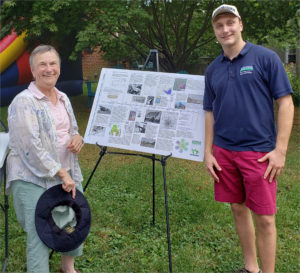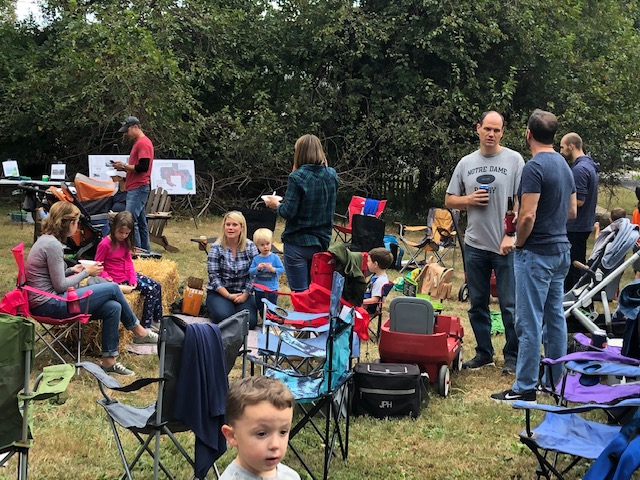The Uncommon Power of “the Commons” to Create Community
My neighborhood has a "commons." So does yours. The commons comprises those explicitly or, in some cases, implicitly shared resources in which the community as a whole has an interest. At a minimum, these include the community’s streets, sidewalks, and public facilities and I would add, among other things, important scenic vistas, architectural character, and environmental resources. (K. Benfield, “The Important Difference Between a Public Space and a 'Common.’” City Lab, July 15, 2013).

The “commons” refers to resources that the members of a community share “in common.” Streets, sidewalks, environmental resources, and common land, such as a property owned and managed by a homeowners’ association (HOA) count as “commons.” Parcels protected by NeighborSpace and managed by a community also count.
The “commons” is important because of the identity it provides for a community, the shared sense of belonging that binds people together and that fosters cooperative action. Two recent events in communities where NeighborSpace has protected land demonstrate the power of “ the commons” to bring neighbors together, a phenomenon that is sadly missing in many suburban communities.
The Greenbrier Community Association had its annual picnic on September 28. Greenbrier Road was shut down to accommodate a band, lots of lawn chairs, and tables full of food for neighbors to share. This commons quickly filled with people old and young. Someone organized face painting for children. A bounce house was erected on a neighbor’s yard and attracted throngs of kids. An enterprising young man from the neighborhood set up his own table to sell hot sauce that he made from vegetables grown in his family’s yard.
NeighborSpace hosted a table to share information about its work, especially the easement it holds on the Greenbrier Memorial Garden, where the Greenbrier Garden and Social Club has been maintaining a beautiful plot for over 50 years. Anyone who provided their email address got a free glass of  wine. (We are not ashamed or afraid to admit that this really was a “quid pro quo”).
wine. (We are not ashamed or afraid to admit that this really was a “quid pro quo”).
People stopped to look at NeighborSpace’s posters, giving staff a chance to test their knowledge about the origins of the area inside the URDL and the county’s open space deficit. Ultimately, neighbors talked about living in the neighborhood, expounding on the virtues of the soundly constructed cape cods and bungalows on lots where care was taken to fell as few trees as possible when the homes were built for the employees of Black and Decker in the 1940s. What was obvious from observing the interactions of people, but left unsaid, was how much neighbors cared about each other, how much the commons bound them together, enriching their lives and making Greenbrier a great place to live.
If we follow the outer loop to Catonsville, we find another neighborhood with a “commons” that brings people together, this time on land that NeighborSpace owns. I’m talking about the Dunmore community, which held its annual “Chili Cook-off” on the seven-acre Dunmore site on October 12. This commons has been bringing people together since 1967, when neighbor and physician, Dr. Herbert Levickas , organized a handful of community members to purchase the site for the benefit of the Dunmore community. Over the years it has been the site of annual neighborhood gatherings, a safe place to walk to walk the dog, and a place in which the gently rolling waters of Herbert Run add a measure of serenity to any stroll. For over 50 years, it has been a place where neighbors have nurtured the land and reaped its many benefits.

Jay Waljasper, the former editor of the Utne Reader, argues that “the commons" and the cooperation it fosters are needed now more than ever:
Growing numbers of people are taking steps that move us, gradually, in the direction of a commons-based society—a world in which the fundamental focus on competition that characterizes life today would be balanced with new attitudes and social structures that foster cooperation. This vision is emerging at precisely the point we need it most. Deeply held myths of the last thirty years about the magic of the market have been shattered by the implosion of the global financial bubble, creating both an opening and an acute need for different ways of living. (J. Waljasper. What, Really, is the Commons. Terrain.org).
As an organization that protects land for people and relies on those same people to take care of it, we couldn’t agree more. But the benefits of a commons- based society flow in two directions. As we saw in the Greenbrier and Dunmore neighborhoods, taking care of “the commons” pays a dividend unlike any other kind of investment. It creates community, a sense of “we,” at a time when so much else in our world is myopically focused on “me.”